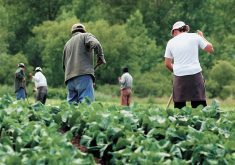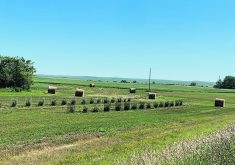More Canadians got their hands dirty this year and took up gardening.
Pandemic gardening became the thing to do in 2020.
Regular and long-time gardeners who couldn’t find their favourite seeds or bulbs last spring may have been mystified by the run on stock but it seems many rookies wanted to produce their own food.
A survey of 1,023 people by the Agri-Food Analytics Laboratory at Dalhousie University found that 51 percent of people grew at least one vegetable or fruit and, of those, 17.4 percent were first-time growers.
Read Also

Agri-business and farms front and centre for Alberta’s Open Farm Days
Open Farm Days continues to enjoy success in its 14th year running, as Alberta farms and agri-businesses were showcased to increase awareness on how food gets to the dinner plate.
The respondents said they looked to gardening as a way to relax (69 percent) and for exercise (55.5 percent).
And, 67 percent of new gardeners said the pandemic influenced them to start growing their own food.
“The pandemic clearly motivated many people to garden more this year,” said Lisa Mullins, a research associate and co-author of the report.
“Results show many Canadians remain quite anxious and really wanted to take control of their own food supply chain during a time of great uncertainty.”
Unsurprisingly to some readers, more Prairie and British Columbia residents garden than don’t. In Ontario, it’s about a 50-50 split between those who garden and those who don’t. The highest proportion of new gardeners was in Atlantic Canada, where 23.7 percent of respondents started last summer.
The Dalhousie survey, released in early October, showed that Canadians remain concerned about food shortages, whether they grow their own food or not.
Among new home food producers, 54 percent are worried compared to 55 percent of long-time gardeners.
Forty percent noted the challenge of finding certain foods during the pandemic.
Food affordability is also a concern during COVID-19, with 85 percent concerned prices will go up.
While some rural residents with lots of space might not consider it to be gardening, at least 19 percent of respondents were growing food on their balconies.
The survey didn’t include herbs or cannabis.
In Regina, a group of university students delivered and planted seedlings around the city to help with food security. In one neighbourhood, residents decided to rehabilitate a 100-metre stretch of boulevard by planting fruits and vegetables.
In Melfort, Sask., a committee called Communities in Bloom rented all its plots in the second-year community garden. In Nipawin, residents started a Veggie Patch through the town’s parks and recreation department.
Dr. Sylvain Charlebois, senior director of the Dalhousie lab, said people have long been asking for more transparency in the food system and growing their own food is one way to get that.
But it’s more than that.
In Winnipeg, a summer news report noted that the Sustainable South Osborne Community Co-op saw more volunteers than ever in its community plot, where excess production is donated to those in need.
The Dalhousie report suggested a follow-up survey next year to see if the numbers change. The researchers also said municipal governments should increase awareness of community gardens.
















